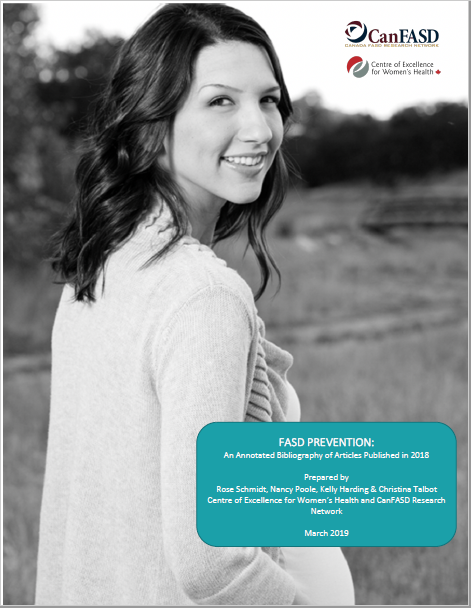Mothers with substance use concerns who access supportive community-based programs are often driven by the desire to be a good parent, to retain custody, and to access care for their children.
Integrating Child Health Supports in Wraparound Programming
Over the years, community-based wraparound programs have grown in their ability to meet these expressed needs of mothers. One key development is infant mental health programming for the children of mothers who are facing substance use and related health and social concerns. Such programming builds on the valuing of integrated support of mothers, of children and the mother child unit, which have often been described in this blog.
Children of substance-involved mothers are at risk for exposure to adverse childhood experiences and their developmental consequences, given that maternal substance use often co-occurs with other risk factors, including partner violence, intergenerational trauma, poverty and maternal mental health concerns. Mothers who have experienced a lack of safety and support in their own childhood often struggle to provide nurturance to their children. Thus, early intervention programs are needed to support positive outcomes for children of substance-involved mothers and the mother-child relationship.
Benefits of Very Early Intervention
We are learning more about the neurodevelopmental trajectories of children with prenatal substance exposure and the implications for support. For example, benefits from interventions for children as early in life as possible, rather than before the age of 6 years more broadly, are being explored. Our increasing understanding of risk and protective profiles, alongside the benefits of early intervention, are informing targeted evidence-based early interventions that contribute to improvement in children’s neurodevelopment.
Building the Evidence for Early Infant Mental Health Intervention
Researchers and service providers in our Prevention Network Action Team (pNAT) are committed to evidencing approaches that promote the wellness of mothers and children (see the Co-Creating Evidence study). Currently, a team involving pNAT researchers and two services, Breaking the Cycle and Maxxine Wright, are engaged in a new study that will examine the effectiveness of enhanced infant mental health components integrated in community-based services for substance involved mothers and children, compared to supportive programming for mothers and children offering basic wellness supports for children. The study aims to establish the comparative effectiveness and mechanisms of change of the enhanced infant mental health components, as well as estimate the long-term social return on investment.
This study will make a much-needed contribution to the evidence for infant mental health interventions in real life settings of programs serving mothers with substance use related health and social challenges, and their children.
For more info on the new study, see: A comparative effectiveness study of the Breaking the Cycle and Maxxine Wright intervention programs for substance-involved mothers and their children: Study protocol by Nicole Racine, Sophie Barriault, Mary Motz, Margaret Leslie, Nancy Poole, Shainur Premji, Naomi C. Z. Andrews, Denise Penaloza, and Debra Pepler.




 Researchers associated with the Prevention Network Action Team (pNAT) of the
Researchers associated with the Prevention Network Action Team (pNAT) of the 
 A newly published book entitled
A newly published book entitled  Many women who have FASD are able to benefit from tailored support on substance use problems. Audrey McFarlane, Executive Director of
Many women who have FASD are able to benefit from tailored support on substance use problems. Audrey McFarlane, Executive Director of  When you sign up for online alerts regarding new FASD research, a lot of research articles come your way. Some offer hope like the recent article on a possible future treatment for newborns diagnosed with FASD (see
When you sign up for online alerts regarding new FASD research, a lot of research articles come your way. Some offer hope like the recent article on a possible future treatment for newborns diagnosed with FASD (see 
 The Looking After Each Other project completed two new resources recently to add to their previous activities. One is the
The Looking After Each Other project completed two new resources recently to add to their previous activities. One is the 


 In this report it is stated that Europe has the highest level of alcohol consumption in the world, and that the gender gap in drinking, and in binge drinking, among young people has narrowed.
In this report it is stated that Europe has the highest level of alcohol consumption in the world, and that the gender gap in drinking, and in binge drinking, among young people has narrowed. Dorothy Badry was honoured by the Premier’s Council on the Status of Persons with Disabilities for Alberta on December 2nd. Dorothy has been a long-time advocate, researcher and educator on the impact of FASD (and a dedicated member of the Prevention Network Action Team). Her work has contributed to FASD being recognized as a disability. For families and individuals affected by FASD, that recognition has made a huge difference.
Dorothy Badry was honoured by the Premier’s Council on the Status of Persons with Disabilities for Alberta on December 2nd. Dorothy has been a long-time advocate, researcher and educator on the impact of FASD (and a dedicated member of the Prevention Network Action Team). Her work has contributed to FASD being recognized as a disability. For families and individuals affected by FASD, that recognition has made a huge difference.